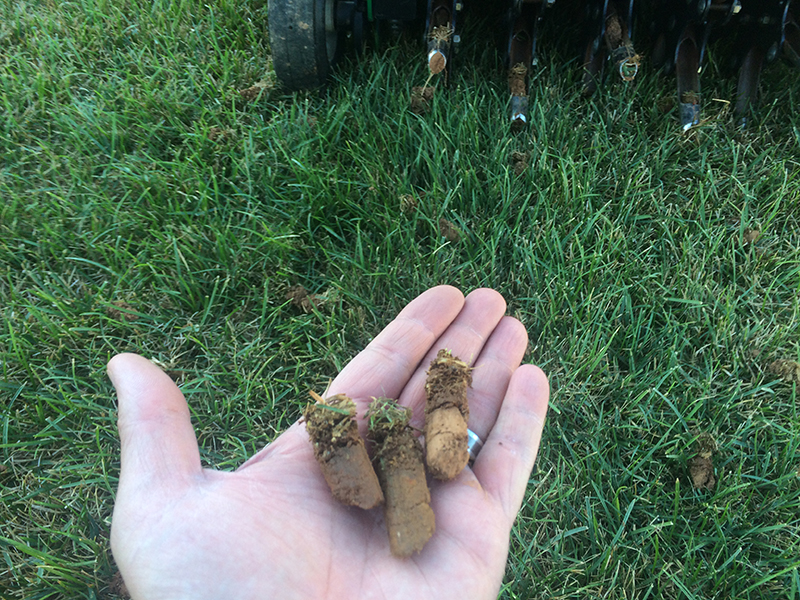Aerating
What is aeration
Aeration is the process of replacing soil air with atmospheric air. To do this, we use a machine called an aerator. The aerator physically removes dirt cores from the ground, allowing more atmospheric air to intermingle with the soil air.
Why is aeration important
Poorly aerated soil is deficient in oxygen. Oxygen is used by plants and soil organisms for respiration. Without aeration, there is little to no exchange between oxygen-rich atmospheric air and carbon dioxide filled soil air.
As a result, plants and soil organisms have trouble absorbing nutrients and water because oxygen is necessary for plant respiration. Eventually, nitrogen leaves the soil and moves into the atmosphere. This compounds the problem since nitrogen is one of the most important nutrients needed for turfgrass growth.

When to aerate
Regular aeration prevents these issues by increasing the exchange of soil and atmospheric air. Aeration is particularly important for wet compacted soils. In Maryland, we are subject to clay (compacted soil) and moderate amounts of rain. Therefore, it is imperative to aerate annually, at the very least.
We prefer to aerate two times per year. Once in the spring and again in the fall.
Over winter, snow slowly melts and saturates our soil, leaving it compacted and depleted of oxygen. Early spring aeration reintroduces oxygen into the soil. We aerate in early March, just in time for grass to begin growing in the spring.
Continuous mowing and foot traffic from spring to fall packs the soil down. Aerating in September and October relieves the compaction and provides more oxygen for the lawn.
This schedule also coincides nicely with our overseeding program which helps develop a thicker lawn. However, you can get the above benefits from aerating at any time of the year.
